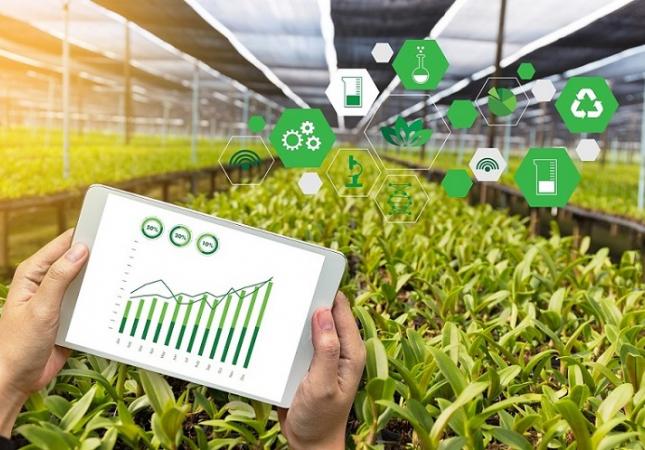A report by Cointelegraph Consulting and VeChain forecasts that it will be possible to trace $300 billion worth of food items in the supply chain within seven years, and could save $100 billion a year. The food supply chain has been long witnessing continuous pressure to enhance its processes to address the gaps and points of failure and the recent COVID19 pandemic has furthered the need to level up the food safety and availability game.
The U.S food supply chain that so far had been considered resilient. However, the pandemic opened up one major weakness – it’s didn’t respond to the crisis as quickly as needed. But what led to the slow response time? A highly disconnected supply chain – where agriculture, food service, and the supermarket chain is not connected effectively. If data on produce and other food items were easily visible and available to players in the industry – produce from the farms wouldn’t be wasted, and supermarket shelves wouldn’t be empty.
When produce packing is coupled with IoT sensors there is immediate data available for example on location, temperature, weather, and freshness. Now, this data can be accessible to providers who are in the ecosystem, from the foodservice and retail market sector.
Let’s get to an example to understand the disconnect a little better. About 1/3RD of all the fresh produce is delivered to the foodservice industry in the U.S and EU. It has been a challenge to shift the focus of supply chains in this pandemic. When agriculture suppliers lost business with the foodservice sector shutting down, they had no access to information to pivot the products to the other potential buyer – the supermarket sector – which could have been a huge opportunity by way of re-routing the supply to another buyer. That’s one of the reasons vegetables were not harvested and milk was being dumped while at the supermarket stores, shelves were empty – the suppliers had no available information on other potential buyers who desperately needed the produce. The milk and foods heading to the restaurants could have headed to the stores but instead were wasted.
Now let’s picture the same scenario with the use of Blockchain technology and IoT. An ecosystem built on a platform like Hyperledger Fabric where participants like growers/suppliers, distributors, providers will have known identities. When produce packing is coupled with IoT sensors there is immediate data available for example on location, temperature, weather, and freshness. Now, this data can be accessible to providers who are in the ecosystem, from the foodservice and retail market sector. They would be able to determine who would be able to access the produce fastest let’s say in times of crisis where the product has the least chances of spoilage – let’s say during a crisis like the pandemic.
Hyperledger Fabric and IoT when integrated also have the power to offer more food safety. How? By way of monitoring food safety data points, to reduce foodborne illnesses through enhanced data collection and automated reporting. Hyperledger Fabric is often recommended as a preferred blockchain platform because of some key advantages –
- An open-source, vendor-neutral blockchain – which is often the foundation to build a network of participants including parties like suppliers, and even direct competitors.
- The framework is for permissioned networks. In the case of blockchain use cases where data protection regulations need to be adhered to, the Hyperledger framework provides access in accordance with data protection regulations.
- A robust platform where participants have known and verified identities. Thus levels of trust and verification required are less, and it offers optimized performance and network scalability (helping to expand the ecosystem as need be).
- Super easy implementation because it offers components, such as consensus and membership services, to be plug-and-play.
Legacy data systems when integrated onto a distributed ledger enable end-users like distributors, manufacturers, and retailers who are able to seamlessly integrate data sourced from IoT sensors to track products throughout the supply chain in real-time. The information gathered from different data points through the use of IoT sensors is the Holy Grail for identifying possibilities of waste reduction, keeping effective records, and analyze more data for improved operations. When the data received is entered on a blockchain like Hyperledger Fabric, users will know to trust this data, knowing that the participants are verified. The data is traceable to the one who entered it and is immutable because every change/edits to data are captured in the blockchain.

The food supply chain teams across the globe are facing the mammoth task of not just reducing food waste due to recalls. In the current situation of the pandemic, the problem of employee safety in processing plants, visibility of smaller farmers and processing plants, problems related to logistics and transportation disruptions in a pandemic suddenly are in the spotlight. The stakeholders in the food supply chain are many – and blending IoT with Blockchain would probably be a great start to bring in a cultural shift in the way the food supply chain is managed. The concept of cooperation, trust, and transparency is a long-term vision and strategy is just the onset towards ensuring the industry is prepared to deal with future crises.
Reach out to our team at blockchain@paramountsoft.net to transform the food supply chain process with blockchain technology.
